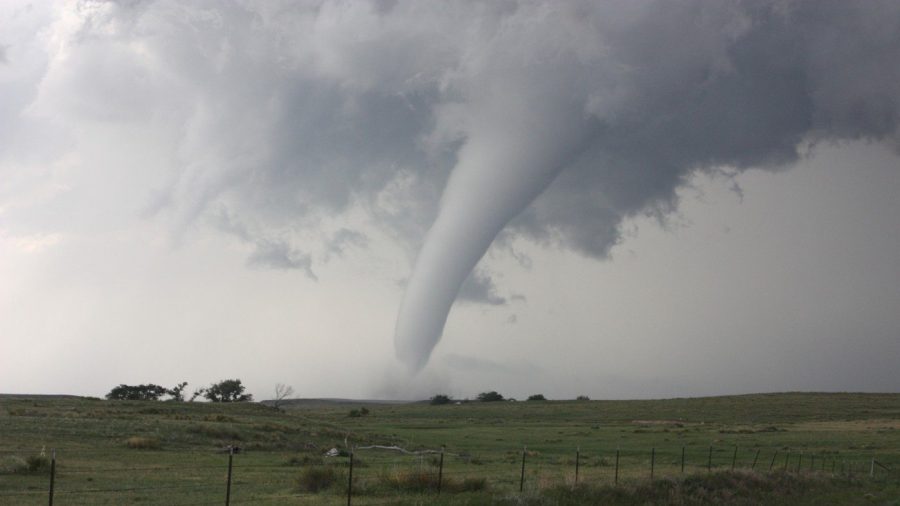Jellyfish design could inspire swimming robots

Equilibrium is a newsletter that tracks the growing global battle over the future of sustainability. Sign up below or online here.
Engines inspired by a relative of the jellyfish could power the next generation of underwater vehicles, a new study has found.
The gelatinous Nanomia bijuga swims by jetting water from its dozen independently controlled pumps, according to the study published in the Proceedings of the National Academy of Sciences on Monday.
That independent, distributed control allows the Nanomia to toggle between swimming styles to prioritize energy efficiency or speed — a feature the authors say could find its way into future generations of submersibles.
“Most animals can either move quickly or in a way that’s energetically efficient, but not both. Having many, distributed propulsion units allows Nanomia to be both fast and efficient,” said marine biologist Kelly Sutherland of the University of Oregon.
“And, remarkably, they do this without having a centralized nervous system to control the different behaviors,” Sutherland added.
Like the Portuguese Man of War, the Nanomia is not a single organism but a colony of individuals who work their jets in tandem to move either quickly or economically.
The findings give “a framework for developing a robot that has a range of capabilities,” said Kevin Du Clos, a researcher in Sutherland’s lab.
Future underwater vehicles might borrow from the animal to alternate the timing of their engines to either move fast or save energy depending on need, the scientists said.
Welcome to Equilibrium, we’re Saul Elbein and Sharon Udasin. Today we’ll start with an announcement from Rolls-Royce, which just completed tests on a new kind of aircraft engine. Then we’ll head to the Mississippi Valley, where residents are bracing for tornados. Plus: A look at Ukraine’s electricity crisis.
Rolls-Royce rolls out hydrogen jet engine

Rolls-Royce has successfully tested a jet engine powered by green hydrogen, the company announced on Monday.
“The UK is leading the global shift to guilt-free flying,” Grant Shapps, the U.K. secretary of state for business, energy and industrial strategy, said in a statement.
Public-private partnership: The ground-based test is the fruit of a collaboration between the U.K. government, Manchester-based Rolls-Royce and London-based air carrier easyJet.
- The test was carried out at the British military aircraft testing site at Boscombe Down, in southern England.
- It used green hydrogen fuel generated by harnessing the power of wind and waves at the European Marine Energy Center in the remote Orkney Islands, between Scotland and Norway.
“Hydrogen offers great possibilities for a range of aircraft, including easyJet-sized aircraft,” said EasyJet CEO Johan Lundgren.
Quick refresher: Green hydrogen is a fuel produced by breaking apart molecules like water or ammonia with renewable energy.
- That’s in contrast to most industrial hydrogen, which is currently using fossil fuels for both ingredients and power.
- While green hydrogen produces no emissions, it costs more electricity to produce than it ultimately releases.
That makes hydrogen a poor fit for applications like home heating, personal automobiles or most power plants — sectors better suited to battery and electric technology, as we reported.
Specific use-case: But with its strict weight limits and intense power requirements, long-haul commercial aviation is generally regarded as one of the most difficult economic sectors to make zero-carbon.
- Many air carriers are already betting on electric aircraft for regional travel.
- But for full-sized airliners, hydrogen fuel still makes more sense than batteries, according to Bloomberg New Energy Finance.
Tornado threats to test the South

Severe thunderstorms may pummel the South with tornadoes and hail on Tuesday, the National Weather Service’s Storm Prediction Center has warned.
Swift system: The weather system will likely move quickly into the lower- to mid-Mississippi Valley — particularly in Tennessee, Mississippi and Louisiana — on Tuesday afternoon, according to the center.
- The region is bracing for “a threat of strong tornadoes, scattered wind damage and hail.”
- Some tornado potential may continue into Wednesday across Mississippi and into Alabama.
Impacting millions: The Storm Prediction Center issued a Level 4 of 5 (moderate) risk alert for Tuesday afternoon and evening, CNN reported.
The region under moderate risk covers 1.8 million people and includes parts of the Memphis, Tenn., metroplex and the city of Greenville in Mississippi, according to CNN.
Repeat event: This widespread severe weather will be the second episode of severe thunderstorms to hit parts of the South this month, The Washington Post reported.
- Deadly storms ravaged pockets of Texas and Oklahoma on Nov. 4.
- This time, the hardest hit regions will likely be those between northern Louisiana and southwest Tennessee.
Why such extremes? During the fall, the South experiences clashes between the lingering warmth of summer and influxes of colder Canadian air, the Post noted.
The mid-South therefore can become “an atmospheric battle ground” that fuels storms and causes some to rotate — a process that can “spawn tornadoes,” the Post reported.
Ukrainians coping with continued power cuts

Ukraine’s state grid operator, Ukrenergo, reinstituted nationwide power cuts on Monday, in an effort to keep the system stable amid Russian attacks, according to The Kyiv Independent.
Blackouts becoming routine: The closure of several power plant units increased the grid’s power capacity deficit — a situation in which demand is greater than supply — to 27 percent, the Independent reported, citing a Telegram message from Ukrenergo.
- At the same time, electricity consumption continued to surge due to worsening winter weather.
- The shortfall has forced the grid operator to implement intermittent scheduled and emergency blackouts since the first Russian strike to critical infrastructure on Oct. 10.
When was the last strike? Just last week, Moscow launched the fifth such attack on Ukrainian infrastructure, spurring widespread blackouts in Kyiv and around the country, the Independent reported.
Nearly half of Ukraine’s power system was out of order due to strikes as of Nov. 18, according to the Independent.
Kremlin denies nuclear plant rumors: The Kremlin on Monday denied Ukrainian reports that Russia might be preparing to abandon control of the Zaporizhzhya nuclear plant, according to Radio Free Europe.
- Russia seized control of the facility in March, spurring fears of nuclear catastrophe due to ongoing shelling.
- “There’s no need to look for signs where there are none and cannot be any,” Kremlin spokesman Dmitry Peskov told reporters.
Continued conservation: Over the weekend, Ukrenergo urged Ukrainians to conserve power, even though there was enough electricity to fulfill 80 percent of the country’s needs, The New York Times reported.
- “If consumption increases in the evening, the number of outages may increase,” Ukrainian President Volodymyr Zelensky said in his Saturday night address.
- “This once again shows how important it is now to save power and consume it rationally,” Zelensky added.
Surgery by flashlight: Surgeons at a hospital in Lviv, Ukraine, were operating with only headlamps for several minutes this weekend until a generator kicked in, The Associated Press reported.
“These fateful minutes could have cost the patient his life,” cancer surgeon Oleh Duda told the AP.
Humor in horror: While the maritime city of Odesa, like much of Ukraine, has been coping with electricity shortages, many of its residents are doing so with humor, the Kyiv Post reported.
- Circulating images have shown Odessans frying eggs with candles, blow-drying their hair at supermarkets and offering manicures in underground parking lots, according to the Post.
- “If the Russians think they can scare us with these means, they are deluded,” one worker told the Post.
No-deforestation agreement hurts other ecosystems

An agreement intended to prevent tropical deforestation for palm oil is putting other vital ecosystems at risk, a new study has found.
- For decades, the food and cosmetic industries have been under pressure to stop buying palm oil from plantations that deforest tropical rainforests.
- Palm oil — a fat- and nutrient-dense food native to West Africa but now grown in plantations across the world — is a key ingredient in consumer goods from chocolates to cosmetics.
At risk: Palm oil producers could clear about 95 million hectares of grasslands and dry forests without technically violating the industry’s “zero deforestation” agreement, according to a paper published on Monday in Nature Ecology & Evolution.
That’s because this agreement doesn’t cover a massive swath of grassy and forested landscapes that house huge reserves of carbon and support a diverse array of threatened species, the authors said in a statement.
Attempted fix: In 2018, consumer concerns around the ecological toll of palm oil led the Roundtable on Sustainable Palm Oil to set out guidelines urging “zero deforestation” in producing the crop.
- The Roundtable is a Switzerland-based nonprofit that unites producers, processors and retailers across the entire palm oil supply chain.
- It has been criticized by environmental nonprofits like Rainforest Action Network as “a tool for greenwashing,” according to The Associated Press.
Tropic-specific: But these guidelines are built around a model of deforestation that is highly specific to tropical landscapes in Southeast Asia, according to the study.
If the agreement isn’t updated, then protection of tropical landscapes could simply push palm oil development onto other important bio-regions.
Dry forests: Converting these grasslands and forests to palm plantations could reduce “the ranges of one quarter of vertebrate species that are currently threatened with extinction,” said lead author Susannah Fleiss of the University of York.
“Plantation development would replace the existing habitat in these areas, disrupting the ability of the species present to find food and water, and affecting their migration routes,” Fleiss added.
Miracle crop: The African oil palm tree “is regarded as a miracle crop and it supports the livelihoods of millions of people in tropical countries around the world,” said University of York biologist Jane Hill.
Rather than boycotting or banning the crop, “we need to ensure effective international policies and governance to protect, not just tropical rainforest, but tropical grasslands and dry forests too,” Hill added.
Motor Monday
Tesla is redesigning its five-year-old Model 3, China’s electric vehicle (EV) market is surging and Barcelona’s “bike bus’”gets kids to school safely.
Revamped Tesla Model 3 may be on the way
- Tesla is developing a redesigned version of its Model 3, in an effort to slash production costs and boost interest in its five-year-old electric sedan, Reuters reported. The revamped vehicle, called “Highland,” will likely feature a less complex interior and could include some changes to its exterior and powertrain performance, according to Reuters.
China EV purchases up 75 percent over last October
- China’s rapidly-growing EV market added 578,000 new plug-in vehicles in October — a growth of 75 percent over the previous year, according to InsideEVs. More than 4.6 million EVs have been registered in China so far this year, InsideEVs reported.
Barcelona boasts sprawling ‘bike bus’ system
- A citizen-led project in Barcelona known as “bike bus,” or “bicibus,” is allowing hundreds of children to cycle safely to school in a convoy each morning, Reuters reported. The system, launched as just one route in March 2021, now has 15 routes and aims to encourage sustainable transportation habits, according to Reuters.
Please visit The Hill’s Sustainability section online for more. We’ll see you tomorrow.
Copyright 2023 Nexstar Media Inc. All rights reserved. This material may not be published, broadcast, rewritten, or redistributed.

